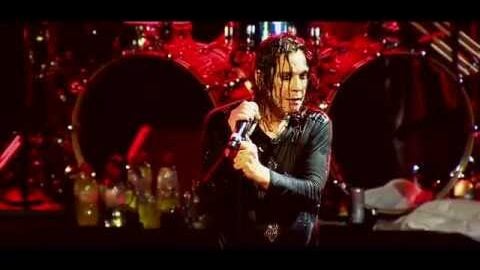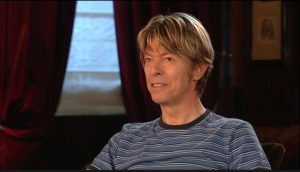Missing Black Sabbath Already? These 10 Bands Bring the Same Dark Magic

via Black Sabbath / YouTube
Black Sabbath’s farewell show marked more than just the end of a band—it closed the book on an era that shaped heavy metal as we know it. Their thunderous riffs, ominous atmosphere, and dark mystique carved a path so distinct that generations of musicians still walk it today. Saying goodbye to such a legacy isn’t easy, especially when that sound still echoes in the hearts of devoted fans.
Yet, the spirit of Sabbath is far from gone. Their influence has seeped into the DNA of countless bands across the globe—artists who’ve inherited the torch of doom, fuzz, and foreboding melody. These groups don’t just mimic the sound; they channel the mood, the weight, and the raw emotion that made Sabbath more than just a band—they made them a force.
So if you’ve been feeling the void since that final encore at Villa Park, rest assured: the darkness lives on. From modern doom dealers to psychedelic riff-worshippers, these ten bands carry the same haunted magic that once rattled speakers and shook souls.
Pentagram
Long before retro doom was cool, Pentagram were living and breathing it—gritty riffs, otherworldly vocals, and a frontman who seemed to live in another dimension entirely. Bobby Liebling’s wild-eyed stage presence and chaotic life made him a cult figure, especially in recent years when he became the subject of unexpected internet fame. But beyond the memes, Pentagram have always been serious players in the realm of heavy, haunting music.
Formed in 1971 in Virginia, Pentagram were often seen as America’s answer to Sabbath. Their sound was unmistakably doomy, carved from the same obsidian slab as early Sabbath records. Still, their journey was anything but smooth—plagued by lineup changes, addictions, and long gaps between releases. It wasn’t until 1985 that they finally released their first full-length album, a delay that turned them into underground legends rather than mainstream contenders.
And maybe that’s why they’re so beloved. Pentagram’s underdog story and raw, uncompromising music struck a chord with doom fans who craved authenticity over polish. They might not have sold out arenas or dominated radio waves, but for those looking to reconnect with the primal force of heavy metal, Pentagram deliver every single time.
Saint Vitus
Saint Vitus didn’t just worship at the altar of Sabbath—they rebuilt it in their own image, brick by crushing brick. Hailing from Los Angeles and founded in 1978, the band took their name from a Sabbath song and carried that inspiration into every slow, sludgy note they played. What emerged was one of the defining voices in the second wave of doom metal, emerging just as the genre began to expand beyond its UK roots.
Like many of their peers, Vitus never flirted with fame. Instead, they embraced the margins, pouring their energy into music that was too bleak, too slow, and too heavy for casual listeners. With Scott Reagers and later Scott “Wino” Weinrich handling vocals, the band crafted cult classics like Born Too Late and V—records that would go on to inspire generations of doom, sludge, and stoner bands.
Even now, they continue to spread their particular brand of sonic gloom. Their most recent self-titled album dropped in 2019, proving that age hasn’t dulled their heaviness. For fans who miss the dirge-like tempos and grimy riffs of Sabbath’s earliest work, Saint Vitus are a living, breathing link to that legacy.
The Obsessed
If there’s a Mount Rushmore of American doom, The Obsessed belong on it. Formed in the late ‘70s and spearheaded by the legendary Scott “Wino” Weinrich, they emerged from Washington DC’s hardcore scene wearing Sabbath influences like a badge of honor. Long hair, loud amps, and low-tuned riffs were their currency, traded for the kind of respect only true underground heroes earn.
Their journey, like many in the doom world, wasn’t exactly linear. After forming, disbanding, and reforming more than once, it took until 1990 for their debut album to finally surface. By that time, Wino had already done a stint with Saint Vitus, further cementing his status as the genre’s roving prophet. The Obsessed may never have cracked the mainstream, but they didn’t need to—the doom faithful knew exactly where to find them.
To this day, The Obsessed remain a powerful reminder of what heavy music can be when stripped of excess and ego. Their sound is raw, riff-heavy, and built to rattle speakers just as effectively as Sabbath once did. If you’re craving the dirt-under-the-nails purity of early doom, they’re as close as it gets.
Kyuss
Kyuss didn’t copy Sabbath—they reimagined them through the haze of the desert sun and the buzz of overdriven tube amps. Rising from the California desert in the early 1990s, their music sounded like Black Sabbath wandering lost in a Joshua Tree trance. While Josh Homme downplayed the Sabbath connection, claiming Black Flag was more of an influence, there’s no denying the monolithic riffing and psychedelic textures trace their lineage back to Iommi’s amplifier.
Their run was brief but seismic. Across just four albums, including the genre-defining Blues For The Red Sun and Welcome to Sky Valley, Kyuss created the blueprint for stoner rock as we know it. Their music was thick, heady, and bursting with heavy groove—Sabbath for a new generation raised on skateboards and fuzz pedals.
Though they disbanded in 1996, the legend of Kyuss never really faded. And with Josh Homme softening his stance on a reunion in recent interviews, there’s a spark of hope for fans still craving their brand of cosmic heaviness. Until then, the records remain—a dusty, blown-out echo of Sabbath’s shadow.
Sleep
Sleep don’t just take cues from Sabbath—they treat them as sacred text. The San José trio’s approach to heavy music is reverential, meditative, and absolutely colossal. Their riffs unfold like ancient rituals, slow and deliberate, inviting listeners into a headspace where time stretches and distortion reigns.
Their 1992 breakthrough, Sleep’s Holy Mountain, became a foundational slab for the then-emerging stoner and doom metal scenes. It captured the weight and mysticism of Sabbath’s early years and wrapped it in clouds of cannabis smoke and hypnotic repetition. Later, their 2018 return with The Sciences offered a love letter to Sabbath lore—from hidden photos in the gatefold to song titles like “Giza Butler” and “Marijuanaut’s Theme.”
Sleep might not release music often, but when they do, it’s an event. Their songs are spiritual successors to Sabbath’s darker side—monolithic, droning, and weirdly uplifting in their devotion to the riff. If Sabbath were prophets of doom, Sleep are the monks keeping the gospel alive in the temple of fuzz.
Electric Wizard
Few bands worship at the altar of Sabbath as devoutly—or as devouringly—as Electric Wizard. Emerging from the misty outskirts of Dorset, they channel Tony Iommi’s dirtiest riffs through layers of fuzz and feedback, conjuring a sound that feels both reverent and dangerous. Even their name is a love letter, stitched together from Sabbath tracks “Electric Funeral” and “The Wizard,” a clear signal of their unholy allegiance.
The music itself feels like it’s been buried underground for decades, caked in distortion and reanimated with occult energy. The riffs are plodding and massive, while vocals swirl like smoke from a ritual circle. But Electric Wizard go beyond sonic imitation—they steep their sound in Lovecraftian horror, satanic imagery, and a love for vintage horror film grain, creating a world where the line between homage and possession blurs.
For fans who miss the evil edge Sabbath sometimes hinted at but never dove fully into, Electric Wizard provide that darker descent. Their slow-motion chaos isn’t for the faint of heart, but if Sabbath’s gloom was your gateway, Electric Wizard might just be your final destination.
The Sword
The Sword might hail from Texas, but their spiritual home is somewhere deep in the forests of 1970s England, where Sabbath’s riffs first rang out like a pagan call to arms. Bursting onto the scene with Age of Winters in 2006, they blended sci-fi lyrics and fantasy imagery with thick, groove-laden guitar work that had more than a whiff of Sabbath’s early days.
Their sound was heavier than classic rock, yet more melodic than most doom. With John Cronise’s unpolished vocals hovering above walls of guitar, The Sword made songs that felt both massive and strangely fun. Tracks like “Freya” or “Winter’s Wolves” came off like ancient myths told through a Marshall stack, while later albums like Apocryphon leaned even further into Sabbath-style swagger.
Even though they’ve since gone on hiatus, The Sword’s discography remains a goldmine for anyone craving those bluesy, blown-out vibes. They didn’t just replicate Sabbath—they refracted it through their own obsessions, building worlds where wizards and warlocks rock harder than ever.
Witchcraft
If you’re looking for a band that captures Sabbath’s vintage charm without sounding like cosplay, Witchcraft is your best bet. Originally formed in Sweden as a one-off tribute to Pentagram, the band quickly evolved into something more—a group committed to reviving that unpolished, mystical sound that made early 70s metal feel like forbidden magic.
Their first few records feel like they were unearthed from a dusty vinyl crate hidden in a coven’s attic. Songs drift with incense-soaked haze, guitars creak with analog warmth, and Magnus Pelander’s vocals float like ghostly invocations. There’s a real sense of time travel here, as if Witchcraft weren’t just inspired by Sabbath, but possessed by the same spirits that fueled them.
Though their later albums adopt a more modern production style, the core remains intact: Sabbath-style chugs, occult themes, and a reverence for heaviness that’s never diluted. If you miss the eerie, proto-metal atmosphere of Sabbath’s earliest work, Witchcraft will take you right back to that candlelit basement.
Lucifer
Lucifer take a more theatrical, occult-rock approach to the Sabbath legacy, infusing vintage heaviness with lush psychedelia and a touch of radio-ready sheen. Led by the charismatic Johanna Sadonis, the Berlin-based band sits at the crossroads of doom metal and classic rock, marrying haunting melodies with thunderous grooves.
Their debut album Lucifer I offered a stripped-down, eerie tribute to Sabbath’s darker moods, channeling both Master of Reality and Vol. 4 through a veil of mysticism. But with each subsequent release, Lucifer have expanded their sonic palette, adding hooks and harmonies that evoke Dio-era Sabbath as much as Blue Öyster Cult or Deep Purple.
Whether you prefer the slow-burn menace of “Total Eclipse” or the soaring energy of “Dreamer,” Lucifer proves that Sabbath’s DNA doesn’t always have to sound like decay. Sometimes, it can shimmer, seduce, and still hit just as hard.
Green Lung
Green Lung are perhaps the freshest torchbearers of Sabbath’s legacy, but don’t mistake their youth for lack of reverence. Hailing from London and steeped in English folklore, the band spins tales of woodland rituals and ancient myths, all wrapped in thick, melodic riffage that would make Tony Iommi crack a grin.
Their 2019 debut Woodland Rites laid the foundation with a mix of whimsical storytelling and doom-laced musicianship. But it was 2021’s Black Harvest that truly solidified their voice—ornate, riff-heavy, and laced with theatrical flair. Songs echo with the grandeur of Queen, the crunch of early metal, and the pagan spirit that once haunted Sabbath’s early years.
Green Lung aren’t just about nostalgia—they’re building something new from the bones of the old. If you’ve ever wondered what Sabbath might sound like if they’d grown up on Hammer Horror and Morris dancing instead of blues and Birmingham, Green Lung might be the answer.





















